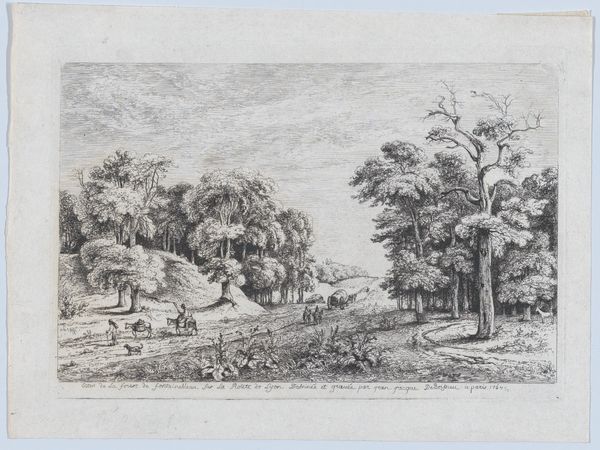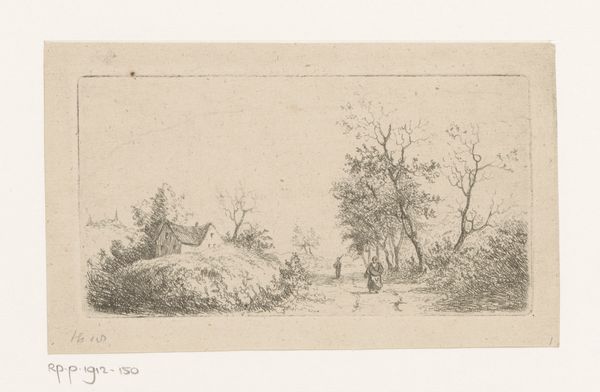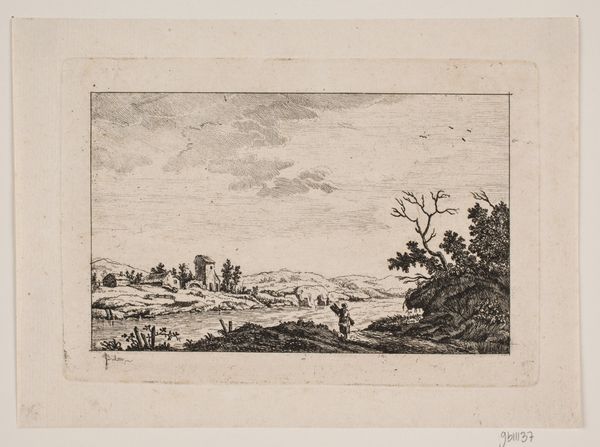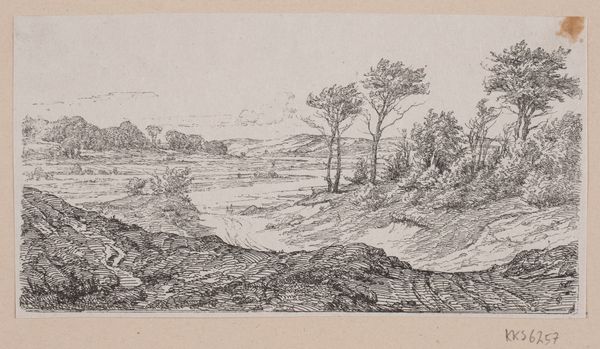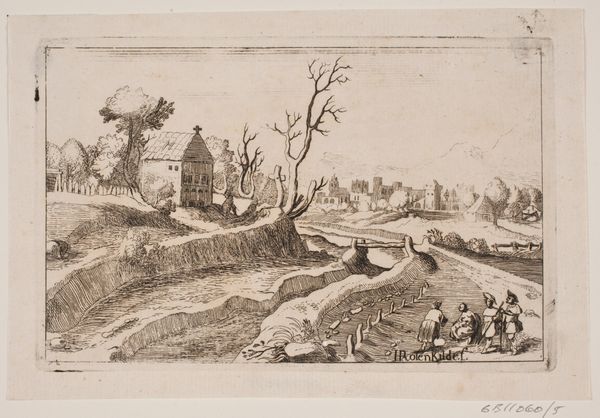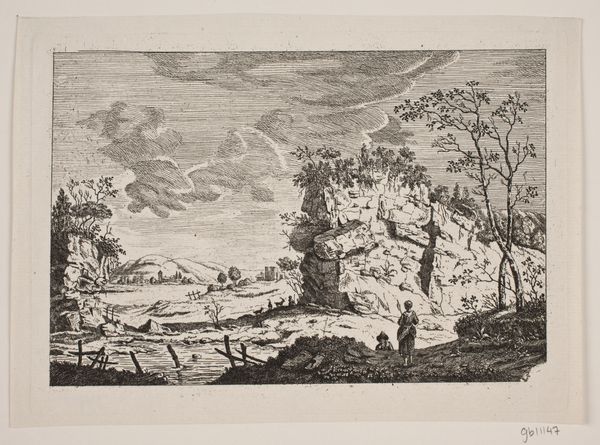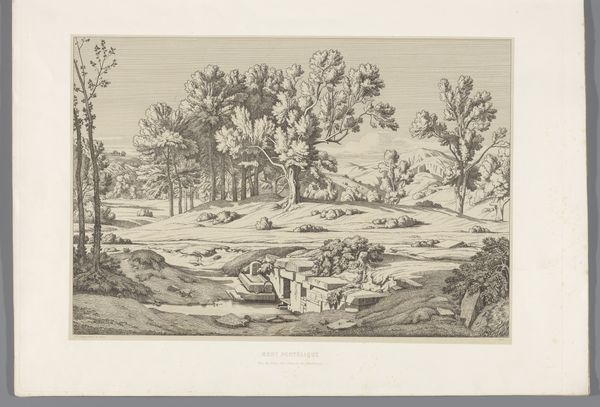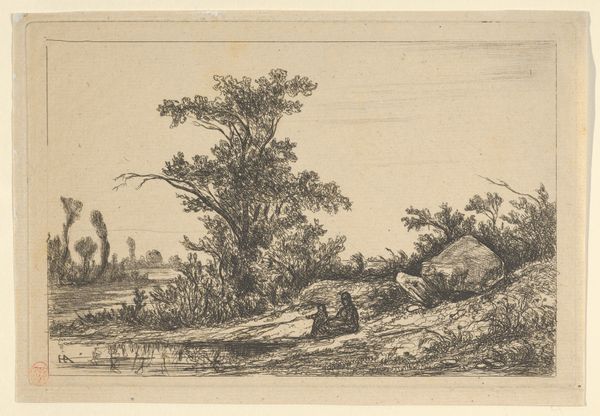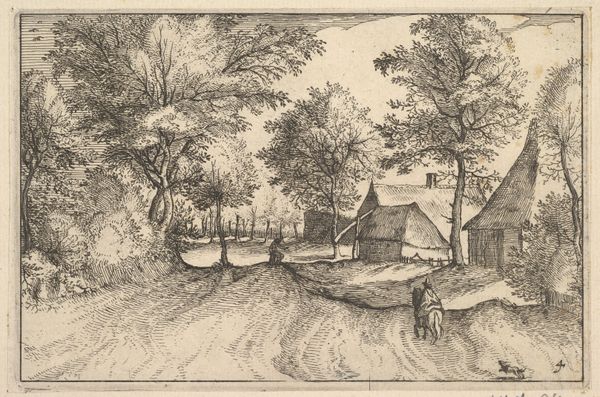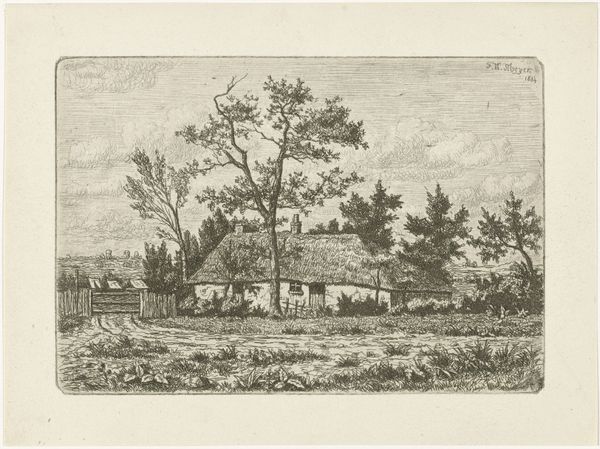
print, etching
# print
#
etching
#
landscape
#
etching
Dimensions: 107 mm (height) x 155 mm (width) (plademaal)
Editor: This is "Vinterlandskab," or "Winter Landscape," an etching by Johan Bülow, created in 1777. It feels so simple, almost stark, with just these bare trees and humble houses under a heavy sky. How would you interpret it? Curator: Well, first I see a material record of labor. Look closely at the etching – each line a product of deliberate, physical effort. Bülow meticulously manipulated the copper plate. It’s not just about representing a winter scene; it's about the process of production itself, how the artist transformed materials using specific techniques. Consider, too, who this print was for? Etchings like this were often made for a burgeoning middle class. Editor: So it’s about accessibility? Curator: Exactly! Think about the material value – the cost of the paper, the ink, the time to create the plate. Was this image intended to evoke feelings of longing for a simpler, rural life for people caught up in growing urbanization? Does the starkness speak to an agrarian economy during a harsh season? The 'simplicity' you noticed might be deeply connected to the social and economic context in which it was made. Editor: That's fascinating! I was focusing on the composition, but now I see how the very making of the piece, and its intended audience, really shapes its meaning. I’ll definitely consider the process and social implications more deeply going forward. Curator: Exactly, by understanding these conditions of production we see that art isn’t created in a vacuum, it reflects – and responds – to a specific time and place. Hopefully listeners will leave here thinking less about what art looks like, and more about what it took to make it, and what place it held.
Comments
No comments
Be the first to comment and join the conversation on the ultimate creative platform.

